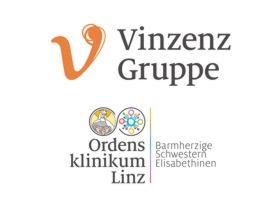Dolak, Werner und Schwaighofer, Hubert und Hellmich, Brigitte und Stadler, Bernhard und Spaun, Georg und Plieschnegger, Wolfgang und Hebenstreit, Arnold und Weber-Eibel, Jutta und Siebert, Franz und Emmanuel, Klaus und Knoflach, Peter und Gschwantler, Michael und Vogel, Wolfgang und Trauner, Michael und Püspök, Andreas
(2017)
Photodynamic therapy with polyhematoporphyrin for malignant biliary obstruction: A nationwide retrospective study of 150 consecutive applications.
United European gastroenterology journal, 5 (1).
pp. 104-110.
ISSN 2050-6406
Für diesen Eintrag wurde kein Volltext-Dokument angefügt.
Kurzfassung
BACKGROUND
Photodynamic therapy (PDT) is a palliative treatment for malignant biliary obstruction.
OBJECTIVE
The objective of this article is to assess the feasibility and safety of this technique.
METHODS
In this nationwide, retrospective study of prospectively collected clinical data, all patients treated with PDT using polyhematoporphyrin in Austria from March 2004 to May 2013 were included. Feasibility, adverse events, stent patency and mortality rates were investigated.
RESULTS
Eighty-eight patients (54 male, 34 female, median age 69 years) underwent 150 PDT procedures at seven Austrian referral centers for biliary endoscopy. The predominant underlying disease was Klatskin tumor (79/88). All PDT procedures were feasible without technical issues. Cholangitis was the most frequent adverse event (21/88). Stent patency was 246 days (95% CI 203-289) median and was significantly longer for metal than for plastic stents (269 vs. 62 days, < 0.01). The median survival was 12.4 months (95% CI 9.7-14.9 m) calculated from first PDT and 15.6 months (95% CI 12.3-18.7 m) calculated from initial diagnosis. In patients suffering from biliary tract cancer, Cox regression revealed the number of PDT treatment sessions as the only independent predictor of survival at a multivariate analysis ( = 0.048).
CONCLUSION
PDT using polyhematoporphyrin was feasible and safe in this nationwide analysis. Survival data suggest a benefit of PDT in this unselected real-life patient population. Prospective trials comparing PDT to other palliative treatments will help to define its role in the management of malignant biliary obstruction. The study is registered at ClinicalTrials.gov number: NCT02504957.
Aktionen (Anmeldung erforderlich)

- Eintrag anzeigen


 Tools
Tools Tools
Tools